#species: fox
Text
POV: u have gender dysphoria AND species dysphoria
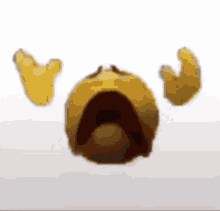
#otherkin#alterhuman#nonhuman#therian#voidpunk#transgender#nonbinary#species dysphoria#wolf therian#fox therian#angelkin#demonkin#fairykin#dragonkin#alienkin#robotkin#cat otherkin#fishkin#monsterkin#unicornkin
1K notes
·
View notes
Text

This fox is looking more feline than usual!! :O
#furry#cute furry#fursona#furry artist#anthro art#furry oc#furry art#artists on the spectrum#kittyu#kitty#lynx#fox#species swap#commission#this was a comm for my fren :)#art commission#sfw furry#chubby#soft#she/they
1K notes
·
View notes
Text
Types of fox bois
Getting tired of this so.. if you are a NSFW acc or a acc with anything including NSFW please do not interact and leave me and this post alone.
Silver fox [x]
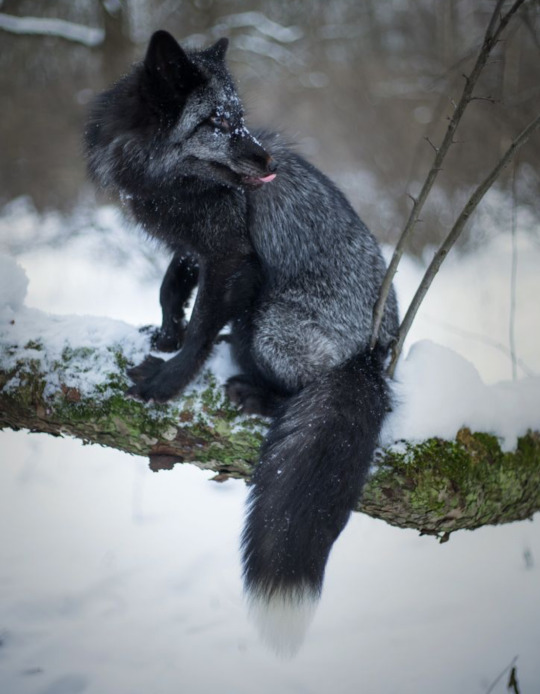
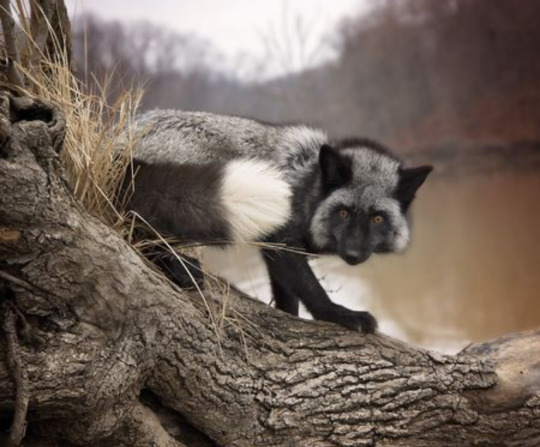
Red Fox [x] [x]


Marble fox [x] [x]


Cross Fox [x] [x]


Grey Fox [x] [x]
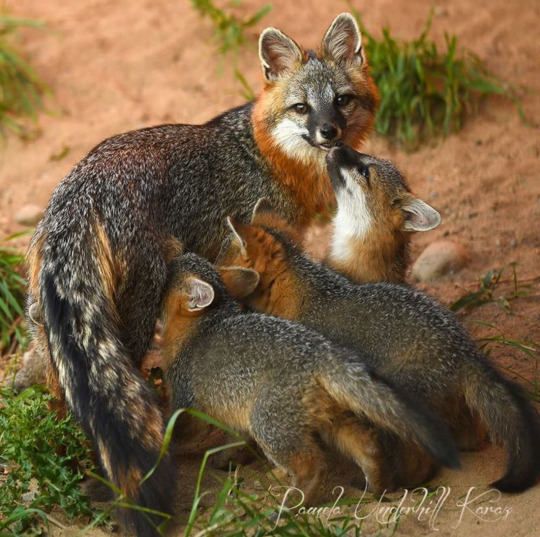
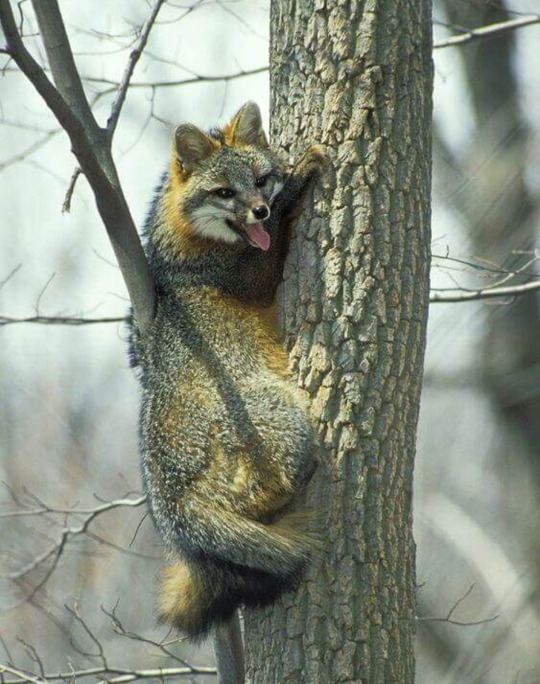
Darwin’s Fox [x] [x]


Tibetan fox [x] [x]


Champagne Fox [x] [x]
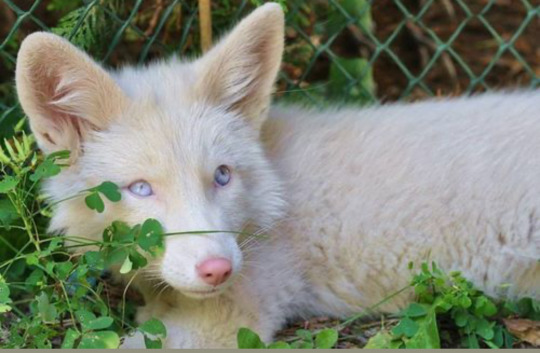

Bat-earred fox [x] [x]


Fennec fox [x] [x]


Arctic fox [x] [x]
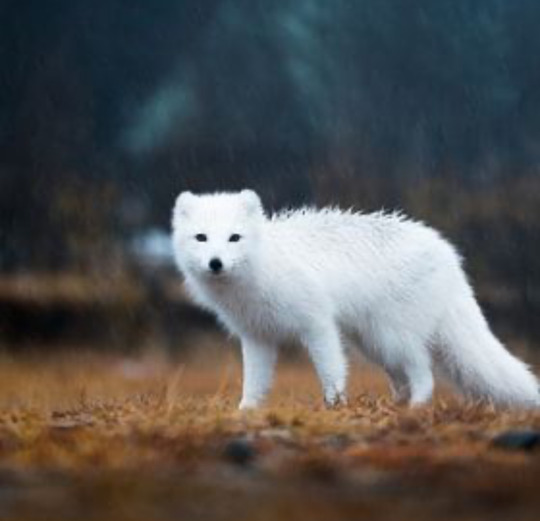

Arctic fox during the summer [x] [x]


Cinnamon Fox [x] [x]
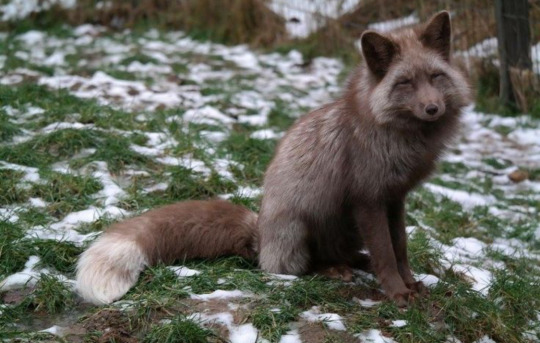
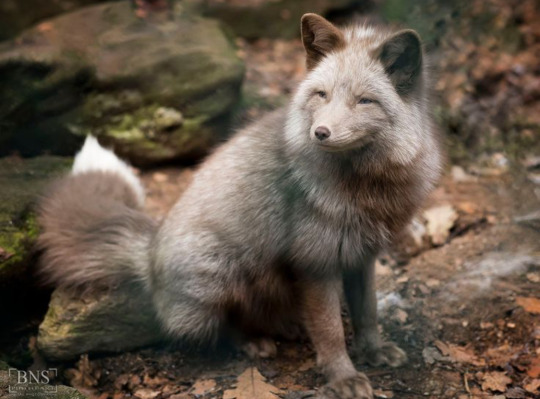
Red marble fox [x] [x]


Albino fox [x] [x]


Edit: I know that some of these foxes are just color variations of the red Fox.. that’s why I put Fox Color Variants in the tags.
Part II
423 notes
·
View notes
Text
Note: Reasons to Be Cheerful has had weirdly huge formatting issues for the past six or so months, so if that version is a mess, this link should work better.
"Florida Power & Light Company (FPL), the Sunshine State’s largest power utility, employs all the people you might expect: electricians, lineworkers, mechanical engineers — and a few you might not. For over 40 years, the company has kept a team of wildlife biologists on staff. Their task? Monitoring the giant carnivorous reptiles that reside in one of the state’s nuclear power plants.
Saving the American Crocodile
What sounds like a low-budget creature feature is actually a wildly successful conservation story. It goes like this: In 1975, the shy and reclusive American crocodile was facing extinction. Over-hunting and habitat decline caused by encroaching development had pushed its numbers to a record low. By 1975, when it was listed as endangered under the Endangered Species Act, there were only 200 to 300 left.
Three years later, in 1978, workers at the Turkey Point nuclear power plant in Homestead, Florida happened upon something that must have made them gasp: a crocodile nest along one of the plant’s 5,900-acre “cooling canals.” Rather than drive the crocs away — perhaps the easiest solution — FPL hired a team of biologists and implemented a Crocodile Management Plan. Its goal was unconventional: provide a suitable habitat for the crocs within the workings of the nuclear power plant, allowing both to coexist.
Over the course of the next 30 years, FPL’s wildlife biologists monitored nests, tagged hatchlings and generally created a hospitable environment for the reptiles. As it turned out, the plant’s cooling canals provided an ideal habitat: drained earth that never floods on which to lay eggs directly adjacent to water. Over the years, more and more crocs made the cooling canals home. By 1985, the nests at Turkey Point were responsible for 10 percent of American crocodile hatchlings in South Florida. In 2007, the U.S. Fish and Wildlife Service downgraded the American crocodile’s status from endangered to threatened, singling out FPL for its efforts.
The program continues to this day. To date, biologists have tagged some 7,000 babies born at the plant. In 2021, there were a record-setting 565 crocodile hatchlings at the Turkey Point facility.
"Reconciliation Ecology"
Turkey Point’s efforts are an example of what is known in the conservation world as “reconciliation ecology.” Rather than create separate areas where nature or animals can thrive in isolation from humans, reconciliation ecology suggests that we can blend the rich natural world with the world of human activity. Michael Rosenzweig, an emeritus professor of ecology and evolutionary biology at the University of Arizona, was a leading force in establishing this concept. The author of Win-Win Ecology: How the Earth’s Species can Survive in the Midst of Human Enterprise, Rosenzweig has pointed out that although human encroachment has typically been considered a threat to biodiversity, the notion that the world must be either “holy” or “profane,” ecologically speaking, is simply not true.
“In addition to its primary value as a conservation tool, reconciliation ecology offers a valuable social byproduct,” writes Rosenzweig in his first chapter. “It promises to reduce the endless bickering and legal wrangling that characterize environmental issues today.”
-via Reasons to Be Cheerful, May 5, 2022. Article continues below. All headings added by me for added readability.
Dr. Madhusudan Katti, an associate professor in the Department of Forestry and Environmental Resources at North Carolina State University, was inspired by Rosenzweig when he did his postdoc at Arizona State. Katti has now been in the field of reconciliation ecology for two decades and teaches classes on the subject. “To me it’s finding solutions to reconciling human development with biodiversity conservation,” Katti says.
This common ground between development and conservation can be consciously planned, like FPL managing a crocodile habitat at a nuclear power plant or the state-sponsored vertical gardens and commercial farms on high-rise buildings in Singapore. Other examples include the restoration of the coral reef around an undersea restaurant in Eilat, Israel, or recent legislation in New York City requiring patterned glass on high-rise buildings, making windows more visible to migratory birds. Other planned examples of reconciliation ecology can be more individually scaled: a rooftop garden in an urban setting, modifying your garden to earn a “backyard bird habitat” certification from the Audubon Society, or even just mowing your lawn less often...
Reconciliation Ecology: Nature's Already Doing It Without Us
But there are countless examples of “accidental” incidents of reconciliation ecology, as well. One of Katti’s favorites is the kit fox of California’s San Joaquin Valley. “The kit fox was one of the very first species listed on the Endangered Species Act,” Katti says. Its decline was caused by habitat loss through agricultural and industrial development, as well as the extermination of the gray wolf population, which led to an increase in coyotes. So kit foxes adapted and moved to new habitats. One of these was the city of Bakersfield, California.
“Bakersfield, surrounded by oil pumps, would be the last place you’d expect to find an endangered species,” Katti says. But researchers think kit foxes have migrated to Bakersfield because they actually have more protection there from predators like coyotes and bobcats. “The kit foxes have figured out that if they can tolerate the human disturbance and live with people, then they are safer from all these other predators,” he says.
Living in the city has led to some interesting behavioral changes. In the wild, for instance, a female kit fox gives birth to her young and raises them by herself in a den. But in the city, researchers have observed multiple females raising their litters together in the same den. “It’s like a form of cooperative breeding,” Katti says. “That wouldn’t happen in the wild.” ...
The Big Picture: How We Think about Conservation
Reconciliation Ecology isn’t just we humans welcoming animals like crocodiles and foxes into our environments, though. It’s also living with nature in a way that most Western societies haven’t done since the Enlightenment. “In recent years, there’s been a recognition that the ‘fortress conservation’ model — keeping nature separated from humans and not thinking of or valuing human-inhabited landscapes — those ideas are outdated,” says Katti.
In fact, in Katti’s classes on reconciliation ecology, he embraces the notion of reconnecting people with their land if they have been unjustly separated from it. “The term reconciliation also applies to all the colonial legacies where both nature and people have been harmed,” Katti says. “For Indigenous communities, the harm done to ecosystems, it’s happened together. So you can talk about addressing both. That’s where a lot of my thinking is at the moment.”
A hopeful version of this sort of reconciliation is happening in California where colleagues of Katti’s who are tribal members are re-introducing “tribal burns” in some areas. Controlled burns have been a part of many Indigenous cultures for millenia, both as a way to prevent devastating forest fires, but also to encourage the growth of certain plants like hazel that are used for basket-weaving and other crafts.
“The notion that people don’t belong there and ‘let nature take care of itself’ doesn’t really work,” Katti says. “That’s the legacy of Western European Enlightenment thinking — a divide between human and nature. That is a real faulty view of nature. People have been part of the ecosystem forever.”
-via Reasons to Be Cheerful, May 5, 2022
#a bit older but still ongoing/relevant and still very cool#florida#crocodile#reptile#ecology#environment#sustainability#endangered species#united states#california#kit fox#nuclear power plant#reconciliation#colonialism#the enlightenment#conservation#human beings#good news#hope#urban ecology
1K notes
·
View notes
Photo

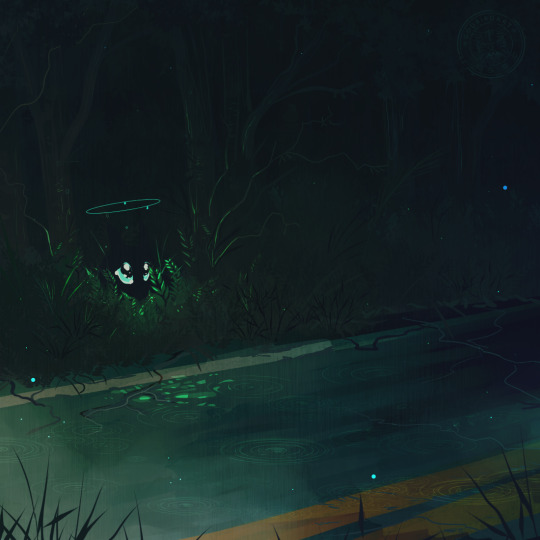
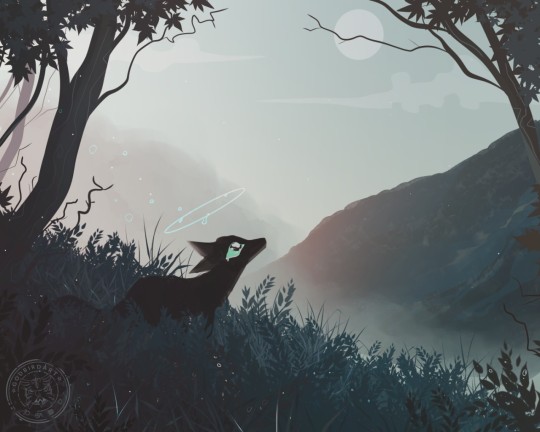
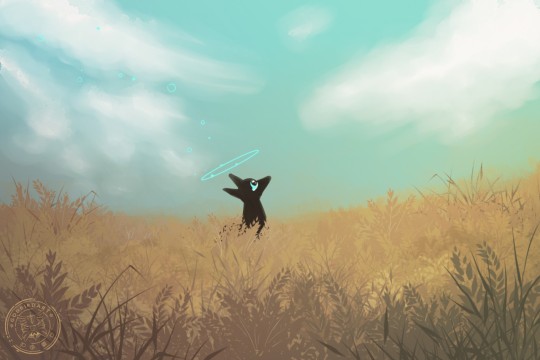


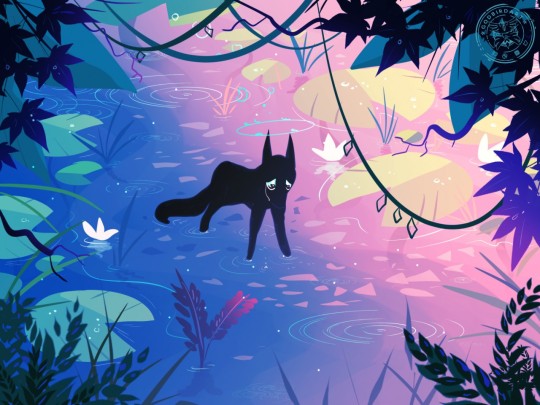
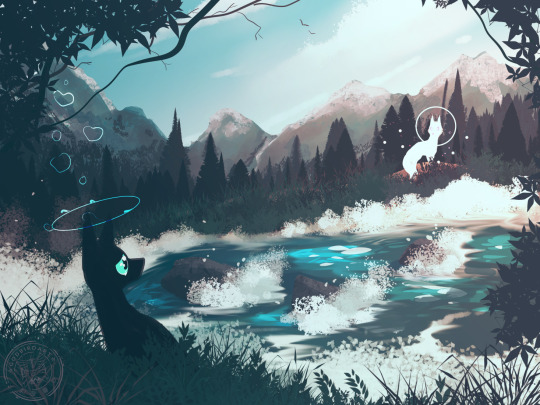
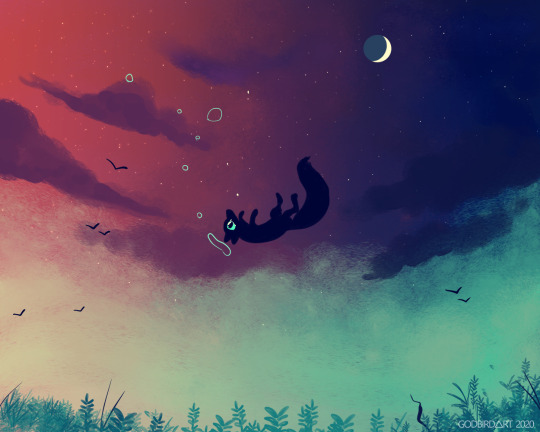
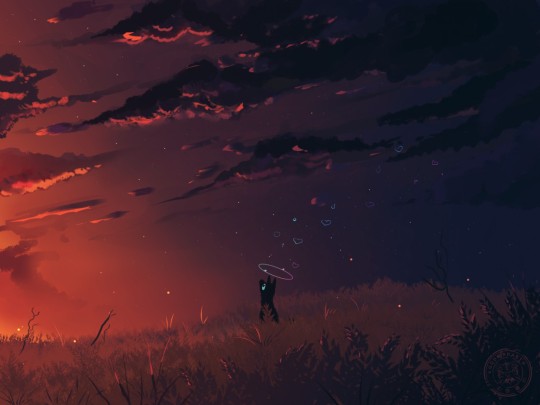
「 WANDERING FOX: 2020 SERIES 」
#fox#vulpines#furry#feral#godbirdart#godbird#2020 art#the advent of my wandering creature of indiscernible canine shaped species#animals#nonanthro#sky#clouds#art#this series followed a specific fox with a little halo that went from sad drippy to bubbly hearts#finding inner peace in 2020#despite everything#landscape#long post
5K notes
·
View notes
Text
I was explaining species dysphoria to a guy on Reddit once and he responded somewhere along the lines of "I won't believe in it until I see a study." And that was just... a baffling take to me. This person, for context, was on a queer subreddit and a lot of his comments were defending queer topics. His response intrigued me.
Like- ok. I am an arctic fox. This is a thing I know about myself. I am asserting that self-knowledge, and he responds by saying my thoughts aren't scientific/rational. Weird. I'd venture most thoughts, especially those of such nebulous nature as identity, don't really come up scientific or rational.
But anyway, what would a scientific study on species dysphoria even look like? A bunch of people giving firsthand accounts of their emotions.
So, to boil down his argument, alterhumans don't exist because people in a university haven't asked a bunch of alterhumans to assert their existence.
Baffling.
Anyway I love all my alterhuman/therian/otherkin sophonts like myself, keep being badass!
236 notes
·
View notes
Text



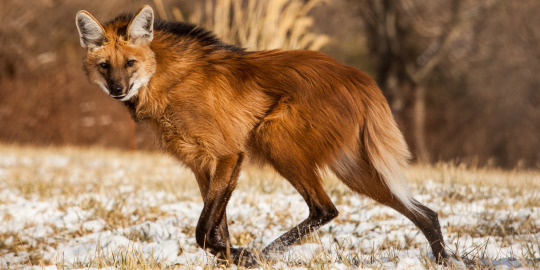


Maned Wolf photodump! Learn more about them here <3
#eee theyre so cool#I’d kinsider them if they weren’t so solitary#in fact I might anyways#maned wolf#endangered animals#threatened species#cool animal things#wolfkin#therian#foxkin#canine#maned fox
1K notes
·
View notes
Text


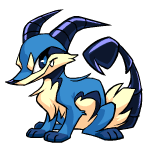

took a shot at finishing an old Neopet species concept sketch in Adobe Animate (basically flash) to go for True Authenticity- i always love the puzzle of scaling it down and suddenly seeing what doesn't read clearly- put both versions side by side to show what I mean!
This pet would be called the Vully, and would be a Neopet native to the Lost Desert. I'm not planning on going super in depth with them currently because i'd like to finish the Centibyte project, but maybe someday i'll play around with the concept more!
#it was initially a 'what if a neopet originated in the darigan citadel' concept + i wanna take a stab at a fox neopet concept#but then i was like. mannn its a floating citadel. a species originating there should have wings... anyway that's why it has horns lol#my art#neopets#vully
268 notes
·
View notes
Text
5 WAYS TO HELP WITH SPECIES DYSPHORIA AS A THERIAN (with and without gear)
- please note that most of these are focused mainly on being a wolf therian, but i'll try my best to make it more inclusive to others.

1 •
my personal favorite, wolf quest! this one does cost money, so this isn't for those who don't have the money/don't already have the game. it really helps me feel more connected to who i am. you find a mate, raise pups, hunt prey, defend your den and pack from predators, and there's even a multiplayer option for you to play with your friends. :o)
(and yes, you can customize what your wolf looks like. all NPC wolves in the game have different personalities for immersion, including you, your pups, and your mate)
please note that the game is still in development! they plan to add a saga where you can live constantly with your pack and continue with new generations each year (and no, you don't HAVE to pass away). you can toggle whether your mate dies or not, if you play on easy you can avoid your pups getting sick by reloading saves if you're sensitive to that, there are constantly new updates being brought out that make the game feel more realistic each time and the development team are incredibly sweet. if you have the money i highly recommend this game, wolf therian or otherwise.
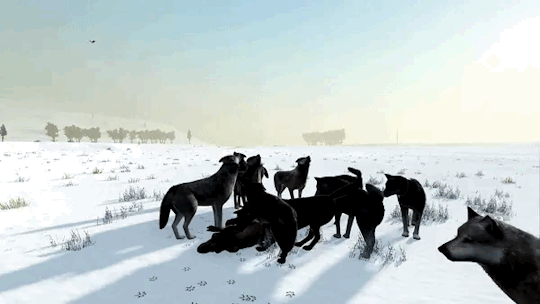

2 •
documentaries. a wonderful way to not only feel more connected to your theriotype(s), but to also learn more information about them! my favorite thing to do when i'm stressed is to wrap myself in warm blankets, turn off my lights and put on a documentary to calm myself down. bonus points if you DO have gear to wear during this, if not that's okay too.
i also like to have my plush friends join me so i can act like they're my pack :o) it's a nice way to feel less lonely as i watch. this also works if you're a domestic cat therian, have your plushies be your clouder! no matter what animal you are though, never feel less valid for wanting your stuffies with you during this. it doesn't matter if your theriotype isn't a social animal in the wild.
if you're an aquatic therian of some kind, i think a good idea would be taking your phone in the bathroom with you and setting it up outside of the tub to watch whilst you're in the water! (or shower if you don't have one, you can also use a kiddie pool outside in the warmer months). PLEASE remember to be safe during this though, if you worry about getting your phone wet then instead find some blue blankets and pretend it's the ocean!
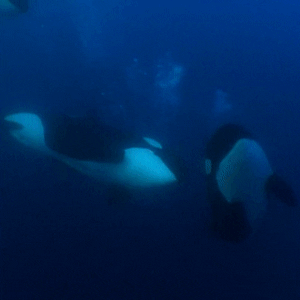

3 •
going outside to where your theriotype resides in naturally. of course this won't be for everyone, since a lot of the time trips can end up being quite costly. something that i like to do is go to my local forest whenever i have the time to do so! i find it refreshing to sit by the stream and play in the water with my mate.
if you're a domestic dog therian, ask to go on a walk around the neighborhood with your friend! (or hell, go by yourself if it's safe enough, you're a free dog, you can do what you want). even as a wild animal i still enjoy this, so don't feel ashamed if you're ALSO a wild animal who wants to do things that domestic dogs do. it doesn't make you any less undomesticated.
if you're an animal that's used to deserts, i recommend going to where you can access sand (e.g. a sandbox at a playground, asking for a small sand tray to play in as a gift, a day out to the beach if you live near one). i also find that dried dirt that's very damaged can feel sort of similar to sand!
if you can't go outside for whatever reason, then there's always ways to make your bedroom feel similar to where you would be more comfortable. if your theriotype lives in dens like caves and underneath trees, make a blanket fort and pretend it's your home! if your theriotype rests in a burrow, make a tunnel with some blankets from the top of your bed all the way down to under it (if that doesn't work, pretend that anything below your bed is underground, and anything above your bed is the surface).
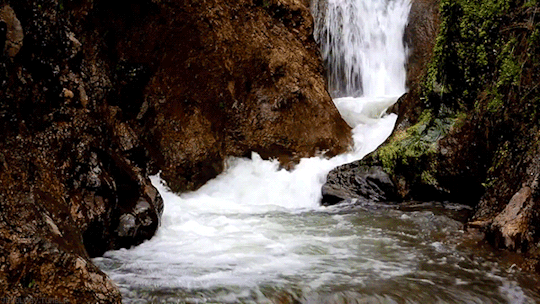

4 •
dressing in clothes that are the same color as your theriotype. i have this fluffy hat with ears that feels very affirming for my species dysphoria, paired with my favorite dark sweaters, warm pants and my tail. if you don't have any gear, don't worry! you don't need to have any to complete an outfit. sometimes clothing textures can also be affirming. for example if you have smooth skin like a whale, a bathing suit can feel similar to blubber. (if you have gender dysphoria, i recommend either full body bathing suits, or wearing pants on top of it and a jacket to help yourself feel more affirmed). i wear fluffy clothes because my fur is fluffy :o) it helps me, personally, but this might not be the same for everyone!
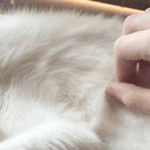

5 •
studying the behavior of your theriotype and trying your best to imitate it to the best of your abilities with the body you have. this can be as simple as copying how they act around each other as a family (for example wolves who are mates will rest their chins on each other to display affection), and as difficult as trying to vocalize what sounds your theriotype makes.
if you wanted to try the latter, i recommend looking at vocal exercises online before as a lot of creature sounds can and will strain your voice, i promise you that warming up your chords will not only help you sound clearer, it'll ensure that it won't take as much effort to do!
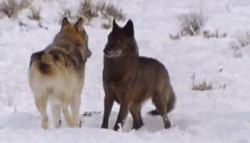
#canine therian#therian community#wolf therian#wolfkin#theriotype#caninekin#nonhumanity#therianthropy#cat therian#cat theriotype#aquatic therian#species dysphoria#therian help#therian advice#dog therian#fox therian#canine theriotype#therian things#therian#woofwoofbarkwoofhowl#confessions of the wolf
252 notes
·
View notes
Text
Wild vs. Feral, Domesticated vs. Tame, Native vs. Invasive, and Why Words Matter
Originally posted on my website at https://rebeccalexa.com/wild-vs-feral/
Recently a post crossed my dash on Facebook featuring a small group of llamas in the forests of the Olympic Peninsula. The caption described them as “wild” llamas (Lama glama). That may seem pretty innocuous to the average person, but to a naturalist it’s a gross mischaracterization. For one thing, llamas are completely domestic animals, no more wild than a cow or dog; they are descended from the guanaco (Lama guanacoe), which is a truly wild camelid. So this means that the llamas on the peninsula are feral, not wild. But why does the distinction of wild vs. feral matter so much?
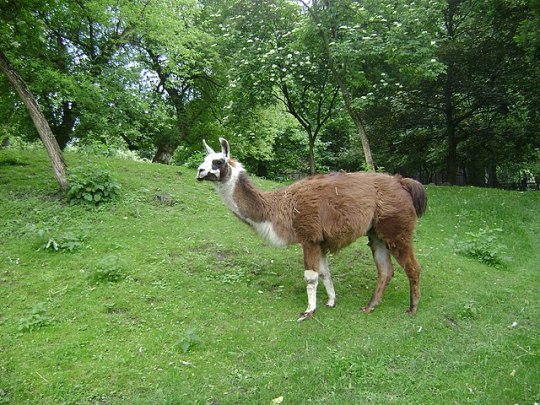
The terms we use to describe various species help us to understand their origin and, perhaps more importantly, their current ecological status. These concepts aren’t just relevant to scientists, however. Everyday people are constantly making decisions that can affect the ecosystems around them, and often these decisions are made without having a full understanding of their impact.
For example, look at how many people release unwanted pets into the wild, whether domesticated rabbits, goldfish, snakes, or other, more exotic animals. Some of these unfortunate animals end up dying pretty awful deaths due to starvation, exposure, or predation. But others manage to survive and reproduce, becoming the latest population of non-native–and potentially invasive–species in their ecosystem. This wouldn’t happen if more people understood the impact of non-native species, and how releasing captive animals puts native species at risk.
But it all starts with knowing that there’s a difference, and understanding the terms that explain why that difference exists. So let’s explore some vocabulary that can be used to describe species, whether animal, plant, or otherwise.
Let’s start with domestication, because there often seems to be confusion as to what makes a species domesticated. Domestication is a process that takes many years, often measured in centuries. Humans breed chosen animals for particular traits over a number of generations. As time passes, each subsequent generation becomes more different from the wild species it originated from, and eventually a new, fully domesticated species emerges from this process of artificial selection by humans.
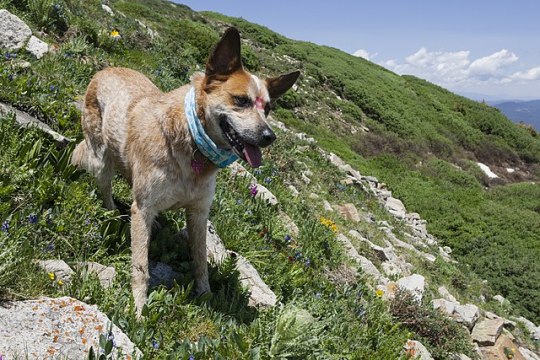
Dogs (Canis familiaris or Canis lupus familiaris) are the first animal humans domesticated in a process that started about 30,000 years ago. They evolved from the now-extinct Pleistocene wolf, a particular lineage of the gray wolf (Canis lupus), and it’s likely that the partnership began as some wolves showed less fear of humans while scavenging from our kills. By 14,000 years ago dogs were a distinct species (or subspecies) from wolves.
Dogs display very different characteristics from wolves. Their faces tend to be shorter with a more pronounced stop (the bump in the forehead where the muzzle meets the rest of the skull.) Floppy ears and curled tails are common, as are patchy-colored coats. Dogs tend to have weaker muscles than wolves of a similar size, shorter legs and smaller feet, smaller teeth, and a smaller size overall. This is a phenomenon known as neoteny, in which domesticated animals have a tendency to retain more juvenile physical traits of their parent wild species, and you can see it in domesticated animals across the board.
But it’s not just physical appearances that matter. Behaviorally dogs are generally more friendly toward humans; in fact, they’ve even developed some human-friendly body language that wolves don’t have, like “puppy dog eyes.” They can be easily trained and, unless poorly socialized, dogs generally enjoy the company of humans.
In many ways, physically and behaviorally, a dog is a wolf that never grew out of its puppy stage. While a young wolf pup may be able to live in someone’s house for a short time, as they grow older they become more destructive and less tolerant of human company. Your dog may love watching out the window during a car ride, but a wolf is going to be much more stressed out by the experience. Even wolf-dog hybrids have to be treated differently than your average domesticated dog because the wolf content has a significant effect on behavior.
This is just one example of how domestication isn’t just a matter of a few generations of selective breeding. You can also compare domesticated horses (Equus ferus caballus) with Przewalski’s horses (Equus ferus przewalskii or Equus przewalskii) or zebras (subgenus Hippotigris), domesticated cows (Bos taurus) with stories of fierce wild aurochs (Bos primigenius), and so forth. In every case the wild and domesticated counterparts are very different in both appearance and behavior.
Now, what about the term “tame”? Many wild animal species have been tamed over the years, either wild-caught individuals or those born in captivity. These tame animals may be more docile in comparison to their fully wild counterparts, but this generally takes a lot of handling and socialization from a young age. Moreover, tame animals retain a lot more wild behaviors than domesticated ones.

Take those supposed “domesticated” foxes that people want to have as pets. Most of the foxes available as pets have no relation to those in the famous Russian fox domestication experiment, but are from modern fur farm lines. And in fact the study foxes came from Russian fur farms, so the researchers were beginning with pre-tamed animals rather than truly wild ones. While some tame foxes may be more amenable to human handling than wild foxes, they are by no means domesticated. They are more prone to wild behaviors like urinating everywhere to mark territory, chewing on anything they can get their jaws on, nipping, and making a LOT of noise. Moreover, whereas dogs adapted to eating an omnivorous diet after millennia of eating alongside us, foxes need a more specialized diet than what you can get at a pet store.
Unfortunately there are unscrupulous people within the exotic pet trade who will advertise their tame (at best) stock as “domesticated.” This often leads consumers to thinking that they’re getting a much more tractable animal that will be as easy to care for as a cat or dog, and sets up everyone involved for disaster (except, of course, the seller with a fatter wallet.)
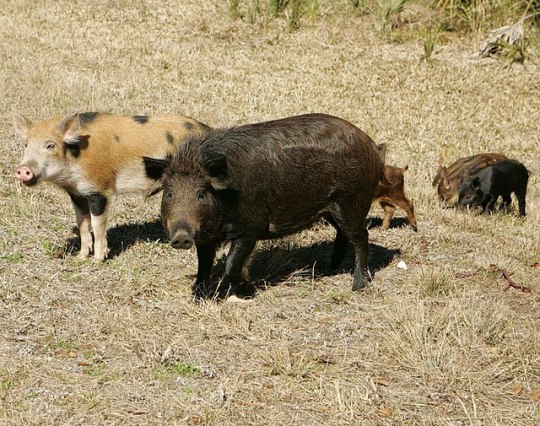
Next, let's compare wild vs. feral. A wild species is one that has never been domesticated, nor have its ancestors. Generally it will be a native species to its ecosystem, though non-native species can also be introduced to an ecosystem without ever having been domesticated. A feral animal, on the other hand, is a member of a domesticated species that has escaped or been released back into the wild and has survived to reproduce new generations that have never been handled by humans.
I’ve often heard people refer to the feral swine (Sus domesticus) that have ravaged ecosystems worldwide as “wild pigs”. They may behave in a wild manner, and they certainly look rougher and hairier than your average well-fed domesticated pig on a farm. It’s not uncommon for feral animals to regain some traits of their wild ancestors. However, that does not make them truly wild.
If you manage to wrest away a litter of newborn piglets from a feral sow and bottle-feed them, they are likely to be able to be socialized and kept in captivity, though they may still physically resemble feral pigs. They haven’t lost the deeply-ingrained genes that carry domesticated traits. However, if you try to raise a newborn Eurasian wild boar (Sus scrofa) or red river hog (Potamochoerus porcus), it will lack the domesticated traits of its farm cousins and show more wild traits as it ages, making it a rather unsuitable pet or farm animal. We also see this return to domestic traits in mustangs and other feral horses captured at a young age. While a mustang born in the wild may be tougher to work with at first than a foal born in captivity and handled from birth, the mustang will be much more calm and easier to train than, say, a zebra.
The problem with referring to feral animals as “wild” is that this suggests they are a natural part of the ecosystem they are in. Because a truly domesticated species (or subspecies) is not the same as the parent species, it has no place to which it is native as a wild animal.

A native species is one that has evolved in a given ecosystem for thousands or even millions of years. In the process it has developed numerous intricate interrelationships with many other species in that ecosystem, creating a careful system of checks and balances. A non-native species is any species that has been taken out of the ecosystem in which it evolved and placed in a different ecosystem where it is not normally found.
For example, here in North America the mourning dove (Zenaida macroura) is a wild native species. While it may resemble domesticated pigeons, it has never been domesticated even when kept in captivity. The Eurasian collared dove (Streptopelia decaocto), on the other hand, was introduced to the Americas after a few dozen individuals were released in the Bahamas in 1974. The feral pigeon (Columba livia domestica) is a domesticated species derived from the rock dove (Columba livia), which is native to Europe, west Asia, and northern Africa. Both the collared dove and pigeon are examples of non-native species. Most non-native species do not offer any benefits to the ecosystems they are introduced to because they do not have established relationships with native species. When they compete with native species for resources, they weaken the ecosystem overall.
Non-native species can be further categorized as naturalized or invasive, or even both. A naturalized species is a non-native one that has managed to establish reproducing populations, rather than going extinct without becoming established. Unfortunately, some people take this to mean that the species has become fully integrated into the new ecosystem. However, this is a process that again takes thousands to millions of years as other species adapt to the newcomer, which itself often also changes as it adapts to its new environment.
Ring-necked pheasants (Phasianus colchicus) are an example of a naturalized species in North America. Native to Asia and parts of Europe, they were introduced here as a game bird 250 years ago. While captive pheasants are regularly released into the wild to offer more hunting opportunities to humans, this species has likely been naturalized from its first introduction.
Again, “naturalized” doesn’t mean “natural”. Pheasants compete with native birds like northern bobwhite (Colinus virginianus) and prairie chickens (Tympanuchus spp.) Not only do they compete for food, nesting sites, and other resources, but they also spread diseases to native birds. Pheasants even engage in brood parasitism, laying their eggs in native birds’ nests and sometimes causing the native birds to abandon the nest and their own young entirely.
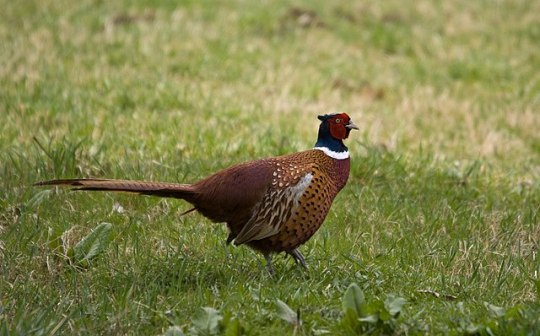
This means that the pheasants are also invasive as well as naturalized. Invasive species are non-natives that aggressively compete with, and sometimes displace or extirpate, native species. There are several hundred species that have become seriously invasive here, including both vertebrate and invertebrate animals, and numerous plants. But even the rest of the over 6000 non-native species that have become naturalized here still put pressure on native species, and have the potential to become invasive if their impact increases to a more damaging point.
Hopefully this gives you a clearer understanding of what these terms mean and why it’s important to know the difference. By knowing a little more about how your local ecosystem works and how different species may be contributing to or detracting from its overall health, you have more power to be able to make decisions that can preserve native species and help ecosystems be more resilient. Given that the removal of invasive species is one of the most important ways we can help ecosystems thrive in spite of climate change, it’s more important than ever that we increase nature literacy among the general populace. Consider this article just one small way to move that effort along.
Did you enjoy this post? Consider taking one of my online foraging and natural history classes or hiring me for a guided nature tour, checking out my other articles, or picking up a paperback or ebook I’ve written! You can even buy me a coffee here!
#wildlife#animals#nature#biology#science#scicomm#invasive species#wild animals#domesticated fox#feral hogs#long post#vocabulary#ecology#educational#biodiversity#conservation#environment#environmentalism#climate change#pigeons
2K notes
·
View notes
Text
the desire ive had these last few days to break & reconstruct my legs to bend in the way theyre supposed to. to have the digitigrade build i should have been born with.

#cw body horror#otherkin#therian#therianthropy#alterhuman#canine therian#canine kin#caninekin#species dysphoria#transspecies#red fox therian#silver fox therian#fox theriotype#fox therian
78 notes
·
View notes
Text
I hate being human
I hate not having paws
No tail
No pointy, fluffy ears
No sharp teeth
Just human hands
Human fingers
Human legs
Human face
I don't ever recognize myself in the mirror
Because when I look in the mirror, a human stares back.
#canine therian#coyote therian#fox therian#therian#therian community#therian things#therianthropy#theriotype#wolf therian#alterhuman#alterhumanity#otherhearted#otherkin#otherkin community#otherkinity#otherkith#species dysphoria#vent#vent post#tw vent#cw vent#tw dysphoria#tw dysmorphia#endlessvoidvents
111 notes
·
View notes
Text
Types of fox bois
Getting tired of this so.. if you are a NSFW acc or a acc with anything including NSFW please do not interact and leave me and this post alone.
Siberian fox [x] [x]


Corsac fox [x] [x]

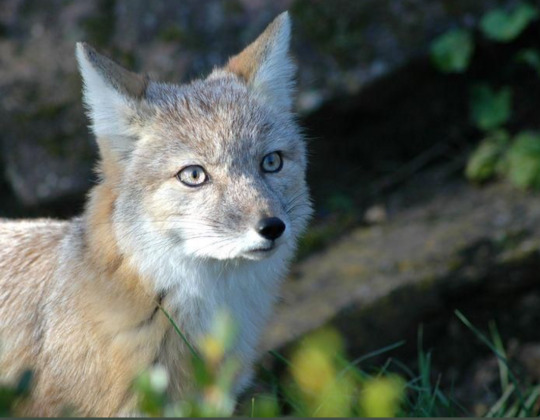
Rüppell’s fox [x] & [x]


Kit Fox [x] [x]
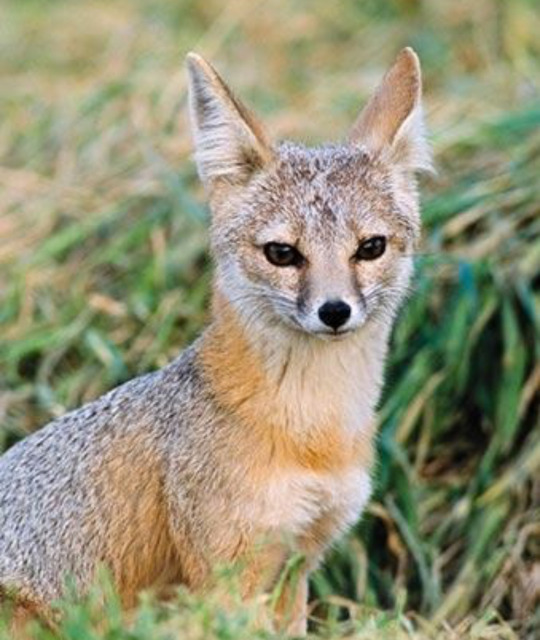

Crab Eating Fox [x] [x]


Swift Fox [x] [x]


Island Fox [x] [x]


Blanford’s Fox [x] [x]
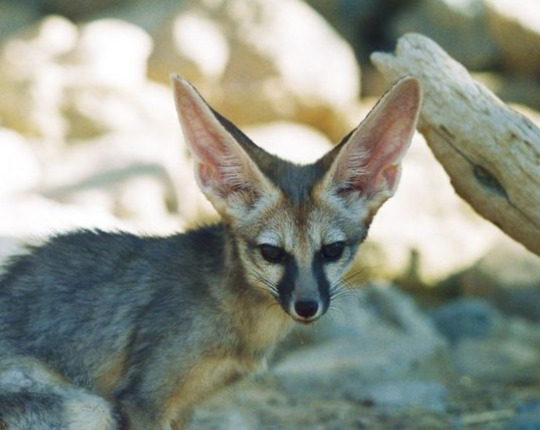
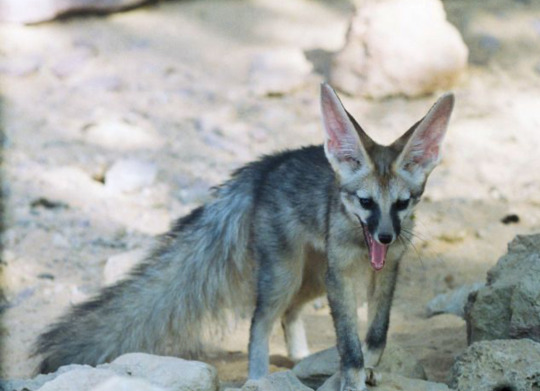
Hoary Fox [x] [x]


Sechuran Fox [x] [x]


Bengal Fox [x] [x]
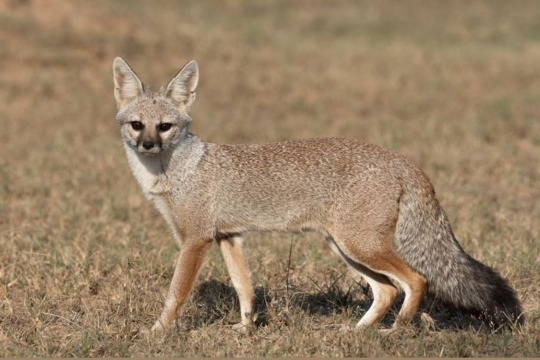

Part I
288 notes
·
View notes
Text
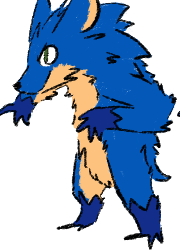






i did a bunch of sonic character designs today btw
#snickart#sonic the hedgehog#thisll be a bit hard to tag here goes.#miles tails prower#knuckles the echidna#amy rose#rouge the bat#shadow the hedgehog#silver the hedgehog#OKAY#i reaaallyy like these Pleaaase look at them.#no id#THEYRE ALL BASED OFF SPECIFIC SPECIES BTW#long eared hedgehog. kit fox. attenboroughs long beaked echidna. european hedgehog. brown long eared bat. Mesechinus orientalis. and#southern white breasted hedgehog#im so cool
72 notes
·
View notes
Text
My body should be a little fox in the snow but also a cat sleeping peacefully in the sun but also just be The Void but instead it's this stupid human body that I Don't Want
#therian#alterhuman#therianthropy#otherkin#fox therian#nonhuman#arctic fox therian#foxkin#therian community#caninekin#feline otherkin#feline kin#feline therian#felinekin#catkin#cat kin#stray cat therian#tortoiseshell cat therian#idk what to tag the last one as ngl#species dysphoria
72 notes
·
View notes
Text
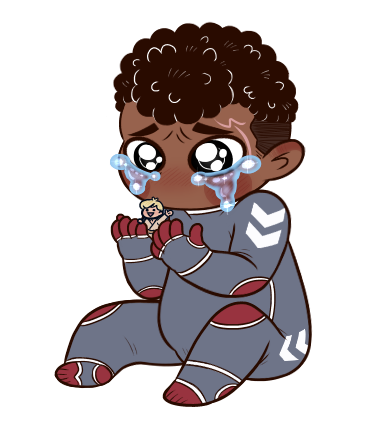
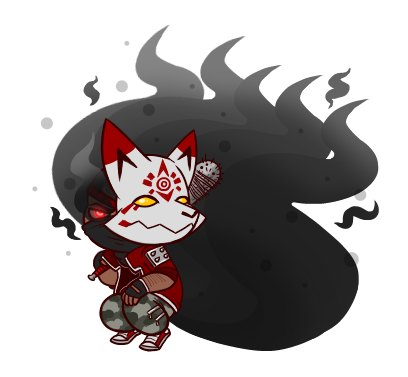
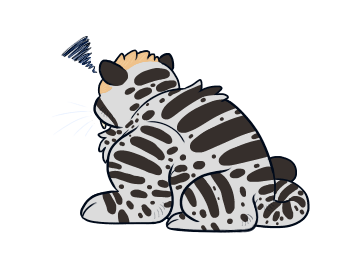




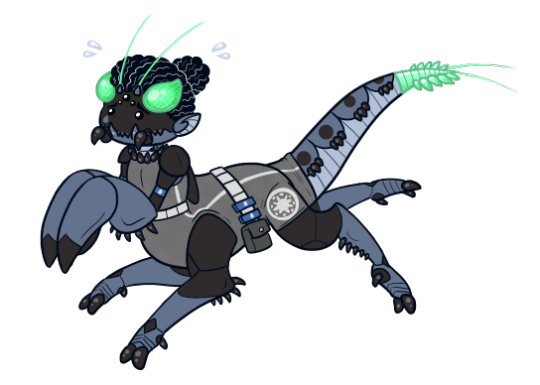
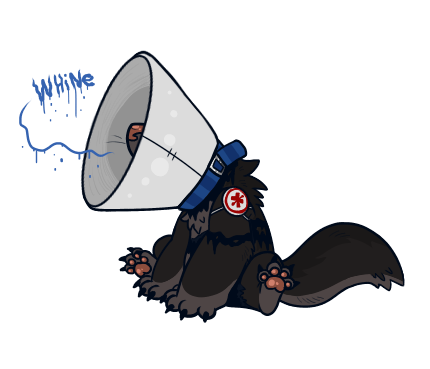

I know I made a poll to pick which of these AUs I'd doodle, but after a long while I decided I wanted to draw all of them anyway.
In order we have:
Tatooine Odd Encounters AU Cody holding Lil Luke;
Superhero AU Fox showing off his shadow powers;
Cabur Kad'edee AU Rex sulking because he's angy;
Mermaid AU Hardcase puffing himself up for funsies;
Species Swap AU Echo reacting to a cursed GIF Fives sent him;
Eel Side of the Moon AU Fives doing his angry wiggles of doom;
Transformation AU Dogma experiencing static brain disease;
Umbaran Pathogen AU Tup trotting about anxiously;
Werewolf AU Kix being put in the cone of shame for his crimes;
Forceful Intervention AU Jesse having a catastrophic meltdown.
—
☕️ Ko-fi | 🧡Commissions
#Eps Draws:#star wars#the clone wars#commander cody#luke skywalker#commander fox#captain rex#clone trooper hardcase#arc trooper echo#arc trooper fives#clone trooper dogma#clone trooper tup#clone medic kix#arc trooper jesse#Tatooine Odd Encounters AU#Superhero AU#Cabur Kad'edee AU#Mermaid AU#Species Swap AU#Eel Side of the Moon AU#The Umbara Pathogen AU#Werewolf AU#Forceful Intervention AU#Transformation Curse AU
127 notes
·
View notes